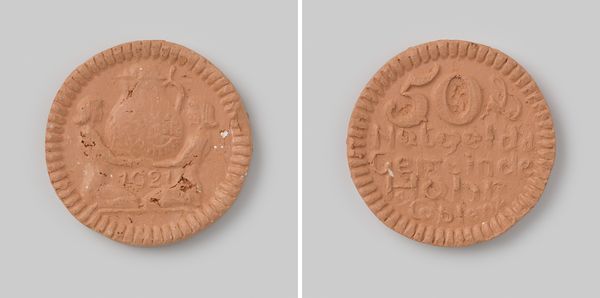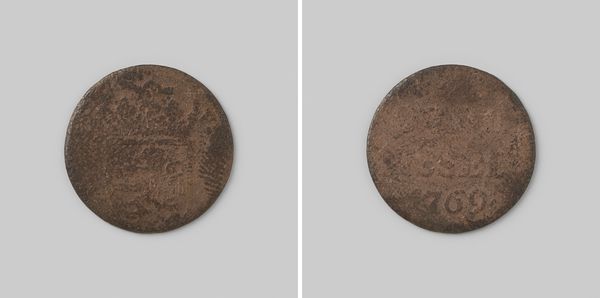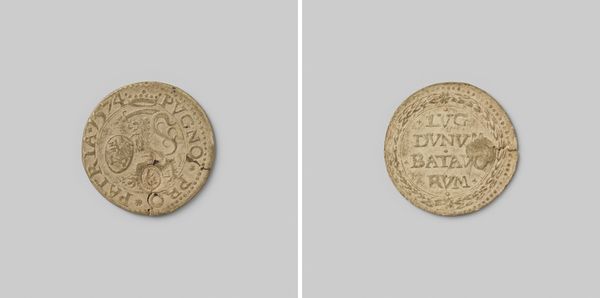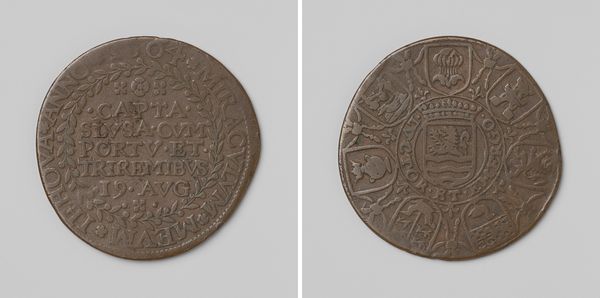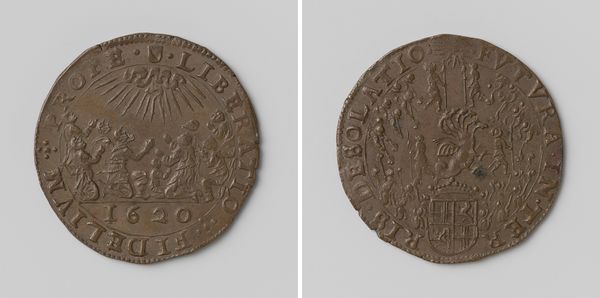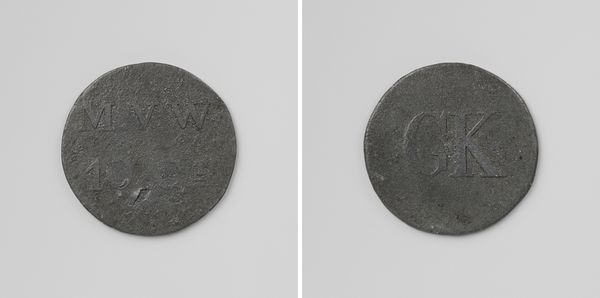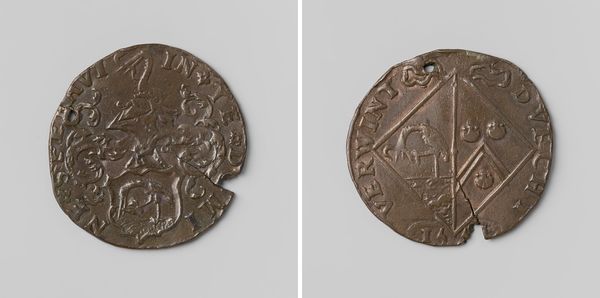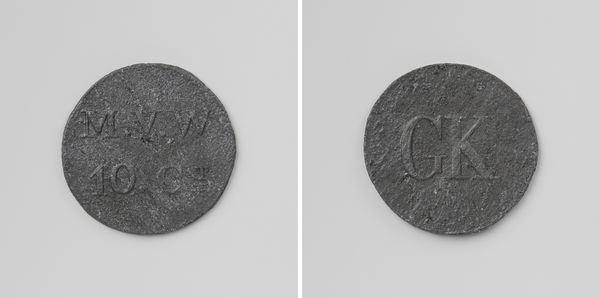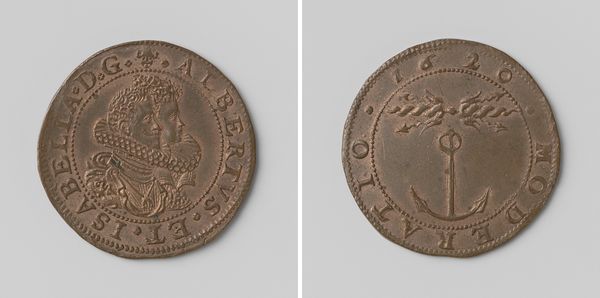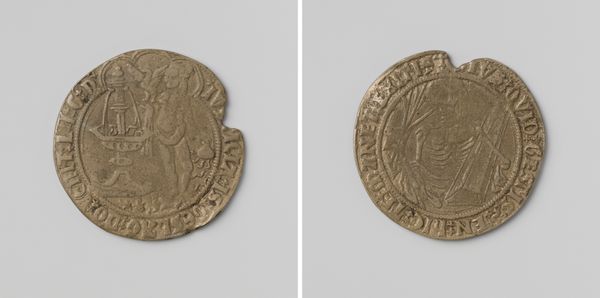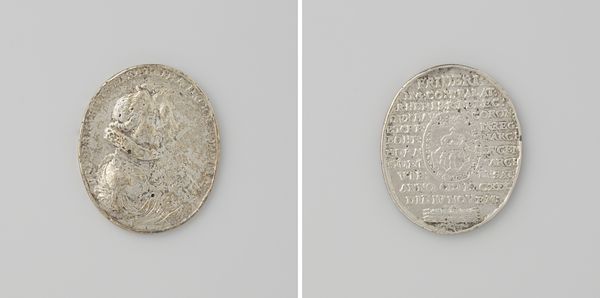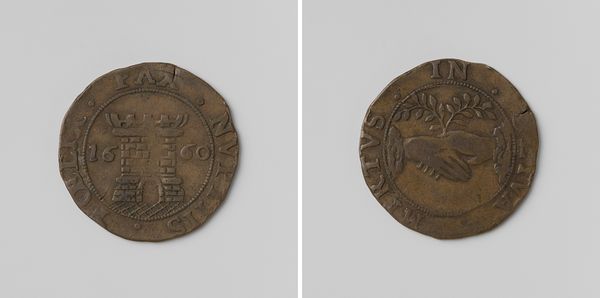
print, relief, ceramic, earthenware
#
pottery
# print
#
relief
#
ceramic
#
german-expressionism
#
earthenware
#
geometric
Dimensions: diameter 3.6 cm, weight 8.77 gr
Copyright: Rijks Museum: Open Domain
Curator: This object presents two views of a 75 Mark Notgeld from Höhr, Coblenz, Germany, dating back to 1921. Crafted from earthenware with relief printing, it stands as a poignant artifact of its time. What are your initial thoughts? Editor: My first thought is that it looks like an artifact from a lost civilization! I'm instantly drawn to its tactile, almost primal quality and, given that clay colour, I want to pick it up. It feels less like currency and more like a lucky charm or a ceremonial object, some kind of token to be used. Curator: You've touched on something crucial. "Notgeld," or emergency money, often took on symbolic significance during times of economic instability. The choice of earthenware as a material speaks volumes. Earth endures. It is raw. Its form speaks to a longing for stability and authenticity amidst financial turmoil. What cultural symbols do you see here? Editor: On one side, there’s definitely an angelic or divine figure; perhaps it represents hope or divine intervention during a very harsh economic period. I'm curious why a traditional relief print, reminiscent of ancient coins or medallions, was adopted in lieu of a more current medium of the time? It adds another layer to the “lucky charm” perception, as though the maker was trying to hearken back to simpler or more secure times. Curator: The "simpler times" argument is astute. Consider how the imagery merges the familiar—currency—with a sense of historical rootedness. Emergency money from the German Expressionism era might use very similar aesthetic lines in wood block print. This earthenware work connects the local with national sentiment through form and emblem. This connects cultural memory and continuity. Editor: It's a fascinating interplay between desperation and hope, tradition and innovation, isn’t it? Almost like burying anxieties about the present beneath the solid, dependable qualities of our ancestry! A cultural paradox of sorts? Curator: Precisely. It becomes a miniature stage upon which personal and collective resilience play out, and now one gets an added insight when reflecting on our own societies of today! Editor: I guess looking at this reminds you to feel like we are always re-enacting ancient dramas of survival… Anyway, it’s thought-provoking to think about how an object so small can contain so much. I will now remember how much the past connects with present concerns, thank you.
Comments
No comments
Be the first to comment and join the conversation on the ultimate creative platform.

